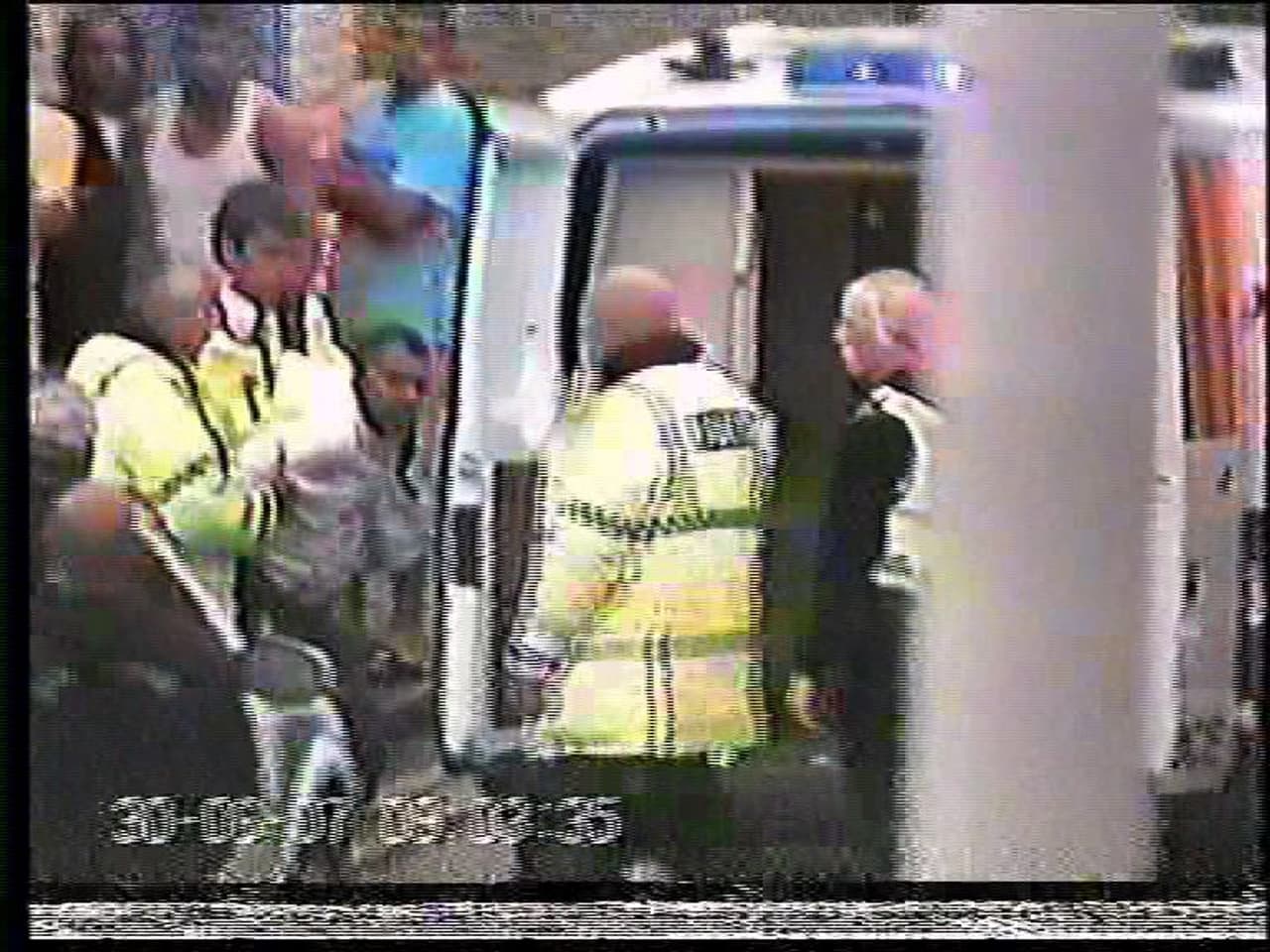
Nadeem Khan: A case of excited delirium?
CCTV footage shows Nadeem Khan being arrested and put into a police van
It was a mid-summer morning in 2007 in the unremarkable town of Brierfield in Lancashire when 28 year old Nadeem Khan popped out to get a pint of milk for his partner. But something went tragically wrong.
He ended up smashing car windows. The police were called. A violent struggle with the police followed.
‘I think when somebody has been taking drugs then they can become erratic, which is what happened to my brother. If someone’s shouting for help and covered in blood you don’t then manhandle them on to the floor.’
Sharmaine Smith
Sharmaine Smith, Mr Khan’s younger sister, admits that her brother had been taking cocaine – and that he had been acting strangely – but her understanding is that he was in distress.
‘There were reports that he was wandering around banging on doors and jumping in front of cars asking for help. He had blood dripping over his clothes, he had cuts on his hands, he had cuts on his head.
Related article: How many have died after police restraint? MP calls for inquiry
‘I think when somebody has been taking drugs then they can become erratic, which is what happened to my brother. If someone’s shouting for help and covered in blood you don’t then manhandle them on the floor.’
Nadeem Khan died in police custody in June 2007.
It was 14 hours before the family were informed. Sharmaine is a dignified, softly spoken young woman. Her voice cracks as she describes how she had to break the news to her mother who was in hospital at the time. ‘She was undergoing cancer treatment. I had to make that decision to go and tell her. I had to wake her up at her hospital bed at seven o’clock in the morning to inform her that her son had died.
CCTV footage of Nadeem Khan in police custody
Waiting for an inquest
It was a further three years before the inquest into Mr Khan’s death was held, and it was only then that Sharmaine found out more about what happened to her brother. CCTV footage showed how five officers wrestled him to the ground, where he was held on the floor. A parked vehicle, however, obstructed the view of how he was restrained once on the floor. From there he was bundled in the back of the van and taken to Burnley police station, he was restrained again and it was there that he collapsed and died. The CCTV camera in the cell was not working. The pathologist’s report catalogued his injuries.
‘It’s very difficult for me to hear that my brother has been hurt over 100 times he had that many cuts and bruises, lacerations to his body. I’ve read in the report that there are numerous bruises to his body consistent with striking of a baton and the bruising has gone so far down into the muscle, nobody wants to read that that is with some force.’
Related article: Unproven science used to ‘explain’ deaths in police custody
I don’t think it was ‘Excited Delirium’ something else happened and contributed to his death. I understand that he needed to be restrained but not in the way that I saw on the CCTV. There’s numerous times where they had banged his head against the police van. To me that’s not the way to get somebody to cooperate with you.
Sharmaine Khan
But according to the initial pathologist’s report the violent struggle and restraint was not the cause of death. It was the first time that Sharmaine or her solicitor had heard the term ‘excited delirium’.
‘As soon as the first post mortem report came a few months after his death it was stated that it was excited delirium’ said Gemma Vine the family’s solicitor.
She called in a second pathologist to test the medical evidence to ensure that the issue of restraint was not ignored.
‘He tried to get across in his evidence that it was an important factor that needed to go in the cause of death when the jury came to their conclusions. I had never come across excited delirium. This is the first case we have come across it. The main issue that we were concentrating on, on behalf of the family, was the officers’ training.’
Related article: Police guidelines permit techniques that can kill
In line with national force policy
Neither Ms Vine nor Sharmaine were aware of the controversy surrounding excited delirium. It was presented in court as a done deal. Now with hindsight Sharmaine believes it overshadowed the role of restraint.
‘I don’t think it was ‘excited delirium’. Something else happened and contributed to his death. I understand that he needed to be restrained but not in the way that I saw on the CCTV. There’s numerous times where they had banged his head against the police van. To me that’s not the way to get somebody to cooperate with you, that just agitates someone even further… placing so much pressure on the heart even a fit normal healthy person who isn’t taking drugs surely that would cause them some damage let alone somebody who is under the influence of a narcotic.’
The official police watchdog, the IPCC, found that the arrest of Nadeem Khan was lawful and justified and the restraint techniques used were in line with policy and procedure.
The inquest jury concluded that Nadeem Khan died following an episode of cocaine induced excited delirium.
The Independent Police Complaints Commission (IPCC), the official police watchdog, found that the arrest of Mr Khan was lawful and justified and the restraint techniques used were in line with policy and procedure. However it did identify the need for officers to be trained in the identification of the rare condition of excited delirium.
Lancashire Police said that all the issues raised by the IPCC had been acted upon including training around the condition and how to get violent detainees into a vehicle. In a statement it said: ‘The restraint techniques used were appropriate and in line with national force policy and training and both the Crown Prosecution Service and the IPCC recommended no action be taken against any of the officers involved.’





